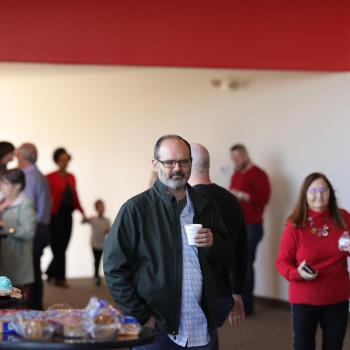The doctrine of subsequence more than likely comes to us from the Wesleyan tradition. It is a little difficult to track because the Wesley brothers, although they could have, did not operate as Theologians. John Wesley traveled the English countryside preaching sermons. Charles Wesley, his brother, is known for penning some of the most beautiful hymns of his era.
defining subsequence
So to track the doctrine of subsequence to the Wesley brothers is difficult to do, although they both firmly believed in it. In their experiences, as well as their beliefs, they believed in a subsequent work, something definitely following salvation. There are probably over 300 words they gave to that second work. Some of the more popular are holiness, Christian perfection, or entire sanctification.
They did not believe that a human could reach the state of being in complete sinlessness. However, they did believe and witness people who reached a state where their hearts were purified from the desire to sin. This purification of desire, this deep work of the heart, they referred to as sanctification. It was a work subsequent to salvation, thus the doctrine of subsequence.
It would be beneficial for Penecostal scholars to re-examine the doctrine of subsequence in light of our beliefs on the baptism of the Holy Spirit. Indeed, we are claiming that the work takes place subsequent to salvation, namely being filled with the Holy Ghost. And there are evidences from the writings of John Fletcher that this sort of activity was occurring during the time of the Wesley brothers as well.
Let’s establish one brief Scriptural occurrence of the doctrine of subsequence with regard to salvation and then baptism in the Holy Ghost.
When do the Disciples get saved?
There is a line of scholarship asserting that the Disciples get saved, and the church begins, on the Day of Pentecost (Acts 2).
However, there is an important event that precedes Pentecost. In one of the post-resurrection appearances, Jesus uses language and does something that can’t be ignored (John 20.19-23).
In short, the case has been made that this is indeed the beginning of Christianity and the church.
Specifically, in regards to the Holy Ghost, there is something unique in this Passage. Jesus breathes on the Disciples and says to them, “Receive the Holy Spirit.”
We have every reason to believe that Jesus imparts the Holy Spirit to them at this point. Therefore, the Holy Spirit is now living inside of them. They are saved!
If a scholar believes that the Disciples are not saved, and the church does not begin until Acts 2, then what does that scholar do with John 20?

The language of peace in John 20 is the language of shalom. This is the language of community, a community at peace with God and with each other. This is not an individual peace.
Furthermore, Jesus establishes church authority by giving the disciples the power to remit and retain sin. This is very strong language.
Beyond that, we see that the Holy Spirit indwells us at salvation. Every Christian has Holy Spirit dwelling within, regardless of whether or not that Christian is filled with the Holy Spirit. Being filled with the Holy Spirit comes later, subsequent to salvation. For the Disciples, subsequence is the only explanation for John 20 and Acts 2.













